A glass of bad decisions: my old friend Tequila
These alcohol types (Tequila and Mezcal) often get confused and their respective names wrongfully interchanged. Although they are incredibly similar, there are some distinctions between them that should be noted. Although it promises barrels of fun to correct your fellow inebriates with your new-found knowledge, I recommend refraining from this practice in that Tequila (or Mezcal) slinging biker bar you stumble into.
I (half) joke about these alcohols as being the igniter of bad decisions but there remains a bit of truth in this statement. Almost everyone I know has a depraved story that revolves around the over consumption of this beverage. I can count myself as part of this ill-fated club as I have been led down the path of immorality by this seemingly benign succulent. I refrained from drinking these beverages for over a decade due to the fact that if I had them as drinking partners for the evening, I was destined to do something that started with the letter “F” that night; it could go either way. So, daddy had to walk away from our agave-based friend for a while.
Nonetheless, I did learn, over time, that these can be complex, interesting and fall into the “sipping” instead of “shooting” liquor categories. With my reattachment of this long-forgotten drinking buddy, I have come to realize that the amount of the spirit and not necessarily the nature of it, may have had something to do with my previous issues.
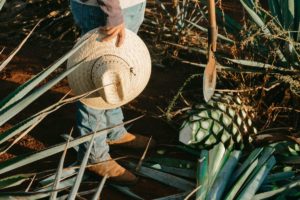
Tequila has the distinction of being made from one type of succulent the blue agave. This yucca relative has a hard core, called a piña, with long fleshy, spikey leaves extending from the base. The plant takes a minimum of six years to reach maturity with most being harvested between seven and ten years. The entire plant is harvested and new agave must be replanted and left to grow for all those years. This makes it especially difficult to balance supply and demand.
To harvest the blue agave, the outer leaves are cut off as close as possible to the piña as they can produce off flavors if processed along with the piña. Since this core doesn’t contain sugar, it cannot be fermented by yeast. The carbohydrate (inulin) must be cooked using one of two methods to hydrolyze the inulin to fermentable sugar.
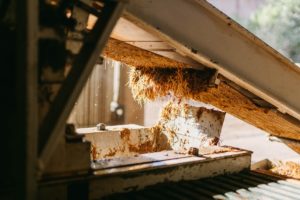
Traditionally the piña is halved and placed in a masonry oven call a horno where it cooks at over 200 degrees F (100 C) for 36 to 48 hours. This long cooking time causes some of the sugar to become caramelized, thus creating additional flavor compounds (congeners). They rest an additional couple days in the oven and the liquified sugar (aguamiel) collected. The cooked piñas are then ground and shredded to get the rest of the sugar liquid. Very few are made with the ‘Tahona Process’ where a giant carved volcanic stone wheel is used to crush the baked piña. Most producers opt for a quicker and less labor-intensive process by using an autoclave with higher temperatures for a much shorter time (6 – 8 hours).
The final sugar solution is prepared for fermentation by mixing milled juice with the aguamiel, for 100% agave Tequila (which is always stated on the label). The mixto Tequila must contain 51% fermentable sugars from the blue agave and the rest can come from “other sources”. These types of Tequila use corn-based or cane-based sugars for the remainder of the mix. Many of these are shipped in bulk, bottled outside Mexico, and will not, for obvious reasons, state 100% blue agave on the label.
The initial fermentation takes place over 24 – 72 hours and producer choices (stainless steel versus oak and types of yeast used) will impact the final product. Some even choose to add milled agave fibers to add flavor. It is important to note that all the flavors of Tequila (or any spirit) are created during the fermentation. The next step, distillation, concentrates the alcohol and any flavor compounds (for better or worse).
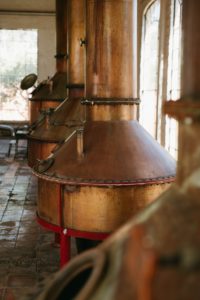
The choice of distillation apparatus greatly affects the final Tequila. For sheer volume of production, rapidity and cost of operation, some producers will choose to use a column still. Traditionally, producers double distilled using pot stills, which run as batches rather than continuous. The first distillation gets the alcohol to around 30% alcohol by volume (ordinario) and the second to around 55-60% abv (Tequila).
At this stage the producers decide if the spirit will see some aging. Most producers choose the readily available used Bourbon barrels (American Oak) for their aging but there are no regulations stating what type of aging vessel thus there is much ongoing experimentation of different oak types and reused barrels. Some less expensive versions may even add abocado, which can be spirit caramel for color, oak extract to mimic barrel exposure, glycerin for body or even sweetening agents. Most of these additions you will not find in the higher quality Tequilas but they are permitted.
The Norma Oficial Mexicana (NOM) specifies the official standards to use the name “Tequila”, which is then certified by the Consejo Regulador del Tequila (CRT). The Denomination of Origin (DO) allows for the production of Tequila to occur in only a select few states of Mexico: Jalisco, Michoacan, Tamaulipas, Nayarit and Guanajuato. This means the agave must be grown and the spirit distilled in these select areas, although over 95% of production takes place in Jalisco, around the town of Tequila.
You have a myriad of serving choices to enjoy this evening-altering beverage. Although most have the pour-and-shoot mentality when it comes to Tequila, that isn’t the tradition. Most proper (not the medicinal tasting crap) Tequila is meant for sipping, usually neat, at room temperature sin salt and citrus. Often served in a skinny two ounce shot glass, caballito (little horse), and accompanied with a second glass of sangrita (little blood): a mix of fruit juices (orange, lime and pomegranate) with some dashes of hot chili sauce. The Consejo Regulador del Tequila approved an official Tequila glass, The Ouverture Tequila glass made by Riedel.
I hope through a better understanding of this historic spirit you may enjoy, with temperance, some sipping and mixing Tequilas. There are a lot of choices and gimmick marketing ploys to get you to trade up for a “super-premium” tequila. I recommend finding a mid-range that you like and experiment up from there. With these crazy expensive bottles, many times you end up with a good Tequila in an expensive bottle. Many of your classic cocktails you can revisit by subbing in some Tequila instead of Vodka or Gin. I’ll have some suggestions for you to experiment with. Just remember, if you are having a Tequila evening, have a wing man (or woman). It may save you some embarrassment. I was lucky enough to have my misfortunes before camera phones; so I still hold the power of denial.
Styles of Tequila with domestic and international names along with aging requirements:
- “Silver” for Blanco or Plata
- “Gold” for Joven or Oro
- “Aged” for Reposado – aged minimum 2 months (oak exposure)
- “Extra-aged” for Añejo – aged minimum 1 year (oak barrel with maximum 600L capacity)
- “Ultra-aged” for Extra Añejo – aged minimum 3 years (oak barrel with maximum 600L capacity)
Curados (new category created in 2006)– Tequila flavored with natural ingredients (usually fruits) and has up to 75% sugar from non-agave sources (cane or corn). Additional sweeteners, colors and flavorings are permitted.
Suggested Cocktails (Old, new and rebooted)
Mexican and Spaniard
- 1 ounce Tequila
- 1 ounce Amontillado Sherry
Mix in chilled Sherry glass and garnish with olive.
Tequila Collins
- ½ ounce fresh squeezed lemon juice
- ½ ounce fresh squeezed orange juice
- ½ ounce of simple syrup
- 1 ounce Tequila
- Juice from ½ lime
- Club soda
Combine all contents into a highball glass with ice
Stir well and top with club soda
Mexican mule (El Burrito)
- 2 ounces of Añejo tequila
- ½ ounce freshly squeezed lime juice
- ½ ounce Caramel simple syrup
- 3 ounces of quality Gingerbeer
Pour Tequila, lime juice and simple syrup into a glass and stir.
Fill glass half full with ice and top with ginger beer
Top with crushed ice

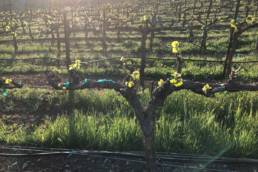

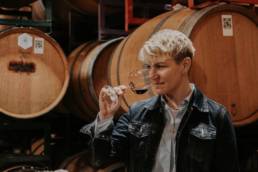

Toro Bravo
2 oz. Añejo tequila
1 oz. Kahlua
Poor over ice…enjoy one, maybe two…but beware the third.
Dave,
Thanks for the drink recipe idea. I’ll definitely have to try that.